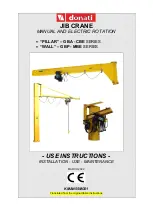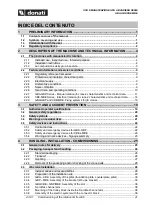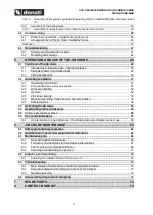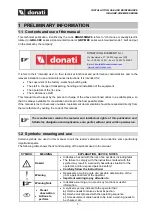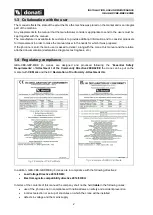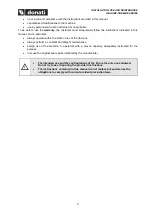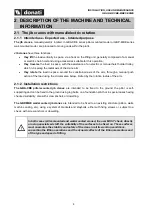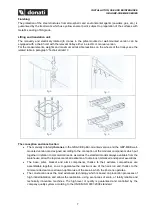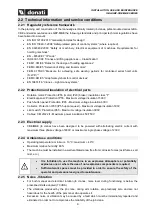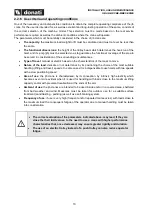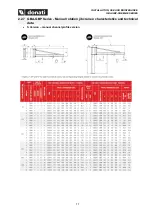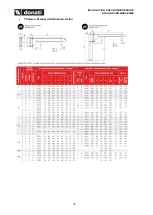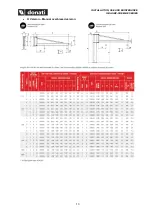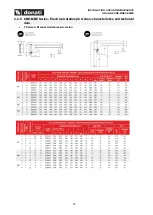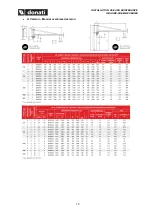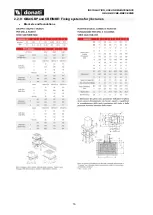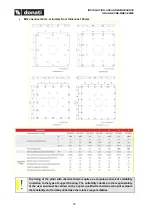
INSTALLATION, USE AND MAINTENANCE
GBA-GBP-CBE-MBE SERIES
5
2.1.3 La composizione delle gru a bandiera
The composition of the jib crane is relatively simple, both in the pillar-mounted version and the wall-mounted
one. Both have a steel structure, the lifting block made up of a chain hoist (electric or manual), the
translation unit formed by a hoist-carrying trolley (electric or push-trolley), a series of accessories (support
brackets, staybolts, foundation plinth, electric unit, etc.).
The
GBA-CBE pillar-mounted
jib crane consists of a tubular pillar with polygonal section fixed using log
bolts or bolts at the base of appropriate size and an arm which rotates round the axis of the pillar itself.
The
GBP-MBE wall-mounted
jib crane consists of a bracket support structure which is bolted on the
support structure (fixed to the wall or anchored to a pillar) and an arm which rotates around an axis on the
support bracket.
Both versions are equipped, in most cases, with a chain hoist, fitted with a trolley.
Pillar (GBA-CBE pillar-mounted version):
Made of pressed steel bent in a tubular structure with a polygonal shape it allows a high rigidity and stability
for the crane; it is fixed to the base using a base plate and a system of bolts or log bolts. In the upper part
a couple of plates support the arm of the crane and allow it to rotate (fig. 3).
Support bracket (GBP-MBE wall-mounted version):
It is formed of a couple of plates made of pressed steel; fixed to the wall or anchored to a pillar using
staybolts or screws, it acts as a support to the arm and allows it to rotate (fig. 4).
The rotating arm:
The arm, rotating around its own axis on grazing ball bearings, is formed by a support girder for the sliding
of the hoist-carrying trolley and comes in three basic models for loads from 125 to 2000 kg and ranges up
to 8 m (fig. 5):
•
The arm in the channel model “S”:
Made with the use of a special section bar made of formed
steel inside which the hoist-carrying trolley slides. The arm is fitted with one or two staybolts which
support the shape and link it to the rising rotating tube. This model features extreme lightness of
movement due to the low inertia from its own reduced weight. This model of the crane is normally
supplied with a push trolley.
•
The arm in the staybolted girder model:
Made using a double-T formed steel beam girder the
lower flange of which the hoist-carrying trolley slides on. The arm is fitted with one or two staybolts
for the support of the beam which connects it to the rising rotating tube. The crane can be used
with push trolleys, electric trolleys or mechanical ones.
•
The arm in the cantilever model:
Made using a double-T formed steel beam girder the lower
flange of which the hoist-carrying trolley slides on. The girder is a self-supporting cantilever, without
support staybolts, and it is directly solid, using suitable reinforcement, to the rising rotating tube. It
allows an optimal use of the available space at a height, due to the absence of staybolts. The crane
can be used with push-trolleys, electric trolleys or mechanical ones.

